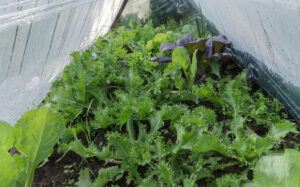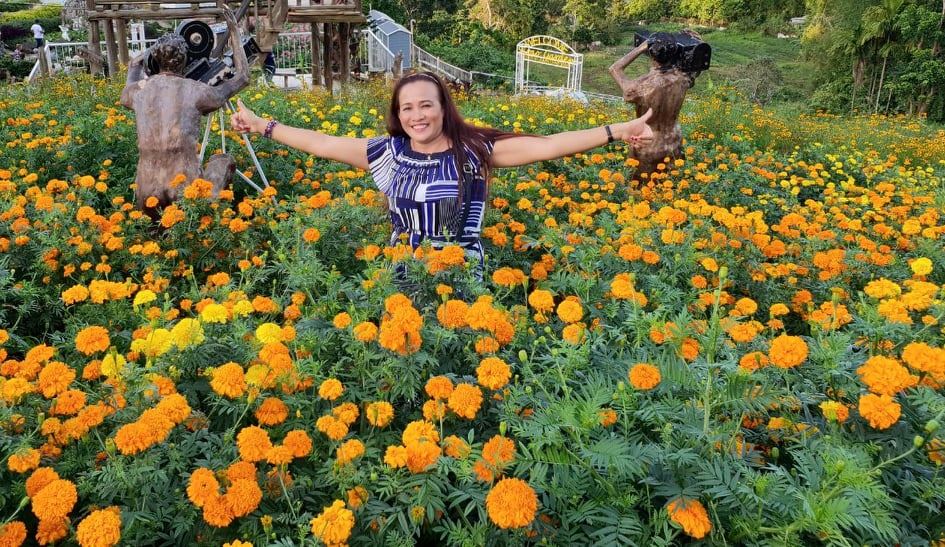
Complete grow tents are nice equipment that puts you in control over the environment of your plants. Grow tents are very effective for growing your plants indoors. But the challenge is how to handle the relative humidity of the plant.
Most plants require a relative humidity that is high, especially seedlings and cuttings. The relative humidity is the measure of the amount of water in the atmosphere or the surrounding air, and there are a lot of ways to raise it.
When you make sure your relative humidity is high, your plants will be in good health, and they will live long.
Let’s consider 11 ways to raise the relative humidity of your plants.
1. To Quickly Raise the Humidity, Put Wet Sponges in Your Tent
Put the sponges in water and after soaking them, put them near your fan and air vents in your tent. The flow of air in the tent will evaporate the water from the sponge, and it will increase the level of humidity.
When the sponges have dried out, you can repeat the same process all over again.
- Use sponges instead of water bowls. Why? Sponges dry out faster, leading to high relative humidity. These sponges should be placed close to the bulbs in your tent and near your plants. This will help to quickly spread moisture
- You can put sponges into water-filled trays. This will also cause fast evaporation of water
- Fit your sponges around your plants on the shelves. It enables the sponges to work.
2. To Increase the Humidity Further, Place a Water Bowl in Your Tent
Fill your bowls or trays with water, and then put them around your tent.
If your tent has an air vent, place one around it. This will hasten the rate of evaporation and increase your humidity level.
- Water bowls are useful as you can fill them when it exhausts. These bowls are useful and more effective than towels in raising the humidity of your plants
- Bowls are the most useful among tents that are wide and have a lot of air vents.
3. Hang Towels to Increase the Humidity Temporarily
Dip the towel in water and spread it around your tents. If possible, place it near the air vent along with your tents. The water evaporating from the towel will raise the level of humidity.
- Ensure the towels are not near growing lamps or other sources of heat as it can burn the towel
- Use the towel temporarily to boost your humidity. Towels are not fit to be used for a long period of time.
- Towels can work well in any tent as long as you hang them somewhere. Ensure you hang it next to an air vent to quicken the rate of evaporation
4. Make Use of a Humidifier to Control the Humidity Automatically
You can set up a humidifier inside your tent. You can hang this humidifier as one of your ceiling support to save space.
Choose an automatic humidifier you can control from your home. This humidifier works to increase humidity by releasing water into the air.
- Ensure you are using a humidifier, not a dehumidifier. Dehumidifiers work in the opposite way of what you planned. Simply put, it removes humidity from the air.
- Regularly refill your household humidifier with water daily. Ensure your humidifier is working by checking it every day
5. Lower the Extractor Fans Spent to Prevent Much Air from Drying Out
Check for the ventilator that evaporates air. Then lower its speed because it pulls out fast. If you have a fan in your tent, too, you can slow it down to maintain the humidity.
You can also opt for shutting the air vent down for about one hour a day.
- Air must be able to go around the tent. So please do not turn off the fan permanently as it can cause more damage to the plant.
6. Decrease the Temperature for an Easy Way to Increase Humidity
If your plants can manage a temperature that is low, use that to your advantage. Adjust the temperature to a lower level to increase the humidity.
Also, you can switch off the light or install fans or air conditioners all to keep the temperature low.
When the temperature is low, you can place the cold air sinker on the ground of the tent. Then your humidity will increase when moist air rises to the top.
- Monitor the level of the temperature using a thermometer. Zip up the tent to keep the temperature constant
7. Remove Half of the Lights to Increase the Humidity in Case You Have Younger Plants
Please switch off the light and allow it to cool off for 5 minutes. If you have many light bulbs in your tent, remove half of them and set them aside.
With a few light bulbs, you will achieve a low temperature and a high level of humidity.
- You can remove light bulbs in the larger tent to increase the humidity. This does not work for smaller tents.
- This method works in a case where you have young plants and seedlings. This is because seedlings need more humidity than light.
8. Place Larger Plants into the Tent if There is Still Space
If you are growing seedlings, why not grow full plants with it? But remember to space these plants, so they do not become overcrowded. Ensure each plant gets its share of light and water
- Fully-grown plants need more watering than young ones. They are also quick to release moisture from the atmosphere; thus, this will increase the level of humidity
- Fully-grown plants do not need moisture from the air as they get it from their roots
- It is only if you have space that you can add a large plant.
9. Group Plants Close Together if They Are Spread Out
Space your plants at the same time; put them next to each other without their leaves in contact. This will help each plant derive what it needs to grow. This will also boost the level of humidity.
- Apart from this, you will also have to water the plants. This will help retain more moisture and steady the level of humidity
- Make sure your plants get enough access to light and water.
10. Mist the Plants with a Spray Bottle if Your Plants Need a Small Boost
Put water on the sides of the leaves. This will help the leaves get the water right away and will also boost the level of humidity. It works, especially well for seedlings that do not draw air from the roots.
Mist the plants each morning to steady the humidity level.
- Regularly mist your plants to maintain your relative humidity
- Mist your plants in the morning; this way, your leaves won’t dry out throughout the day.
11. Set Bell Cloches Over Your Plants to Steady the Humidity
Cloches are tools that control the level of humidity and the temperature of each plant. Set up a cloche for each plant and open the vent holes on each one.
- Cloches are best for emergencies situation where you need a fast rise in humidity.
- Plant such as peas, radishes, parsley can grow well under cloches.
Conclusion
The tools you will need for your grow tent are:
- Towels
- Sponges
- Bowl
- Humidifier
- Fan
- Temperature control
- Large plants
- Bell cloches.
When you apply these tips to grow tents, you will grow a healthy and long-lasting plant.
Thank you so much for your time reading this article. And if you have questions about and or ideas you want to share, you are free to leave your comment below, and I’ll be happy to write back to you.

Anastazja
These are great tips. I don’t know why I hadn’t thought about the sponge or wet towels. At this time of year, the temperature swings so wildly from day to night, I have been trying to think of simple ways to add humidity during the day. I have started several avocado trees from seed and a few fig trees from small branches. Both are easy to start but very sensitive to dryness once sprouted, or the root systems begin. Thanks so much for these easy tips.
admin
Hello Anastazja,
Thank you so much for dropping by and reading my articles about Eleven-ways-to-raise-the-relative-humidity-in-a-complete-grow-tent. Thank you that you find it helpful to your future gardening season.
Thank you so much.
Joyce
Cynthia
I live in New Hampshire, where we have a very short growing season compared to other parts of the country. To bring vegetables to maturity, it is necessary to start growing them indoors and transplant them to the garden after the threat of frost has passed. This task has always been a failure for me, and I have to buy starter plants for my garden. Now, I’m going to guess that humidity has been my problem all along. Thank you for this great advice!
admin
Hi, Cynthia,
Thank you so much for dropping by and having an interest in reading my article. Eleven-ways-to-raise-the-relative-humidity-in-a-complete-grow-ten. Thank you so much that you found it helpful for your indoor gardening project. I’m sure you can do it correctly as you have this complete guide next. Thank you so much.
Joyce
Christine
These are some great tips. I had never heard of using soaked sponges before, but I will definitely do that. Such a simple and effective trick! I also didn’t know about hanging wet towels, but you mentioned that the sponges are more effective, so I think I will definitely get some sponges and use that. So, if I use sponges and water bowls, will I still need a humidifier, or is that optional then?
admin
Hello, Christine,
Thank you so much for visiting my website and reading my article about Eleven-ways-to-raise-the-relative-humidity-in-a-complete-grow-tent. Thanks to that, you found it informative and useful to maintain the humidity for tent gardening. Yes, using sponges and a towel is essential and effective. Good luck!
Joyce
Alejandra
I got interested in gardening lately, and I’m still learning; your article got my attention, as I never thought about growing plants needs some relative humidity, but after reading your great article, it makes sense to me, so today I learned something new, at home I have a few orchid plants that are doing great. Still, I was wondering how I can give them more humidity, I will try some of the methods you shared in your post, and I will see if I get better results, I will also keep in my mind your tips as soon it will be time to start growing new plants for our family garden.
admin
Hello Cynthia,
Thank you for much for visiting my site and reading my artless simple wed. Yes, this a nice way to do when you can not grow your own
Thank you so much,
Joyce